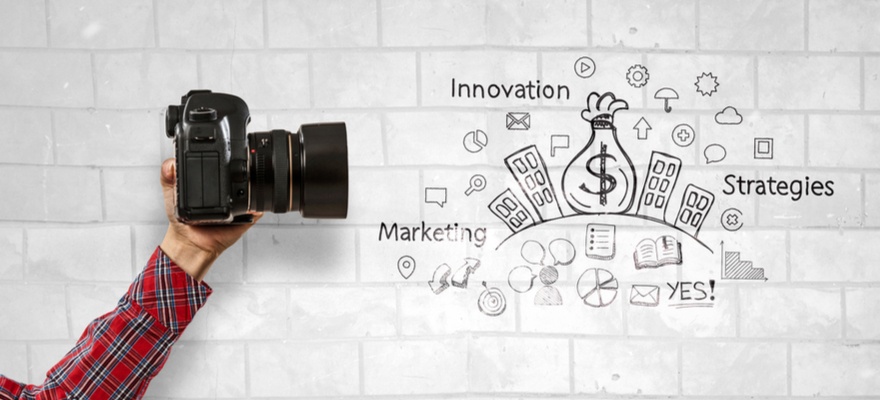Solution selling is dead. Long live inbound sales
This week HubSpot announced the launch of its free inbound sales training courses. Read more about inboundsales and how it can revolutionise sales here.

This week HubSpot announced the launch of its free inbound sales training courses. So what is inbound sales and can it really have replaced a methodology that has built the careers of so many of today’s most successful sales directors?
Let’s take a brief look at the context first.
Always Be Closing!
I was starting out on my sales career in 1992 when Alec Baldwin famously ordered the failing salesmen of Mitch and Murray to ‘Always Be Closing’ in the wonderful Glenngary Glenross. If you still remember the film, remind yourself just how good that scene was, and if you don’t, enjoy its dark humour for the first time courtesy of YouTube.
Solution Selling
Of course we laughed out loud at the time because, fresh out of university, we sales execs were much more sophisticated and modern weren’t we? Some of us even had Rabbit phones. We were solution salespeople.
The solution selling model is based upon providing the buyer with advice and help to understand his problems (Awareness), exploring the type of solution (ours!) that might best fit his needs in the Consideration stage of the buying process and, finally, guiding him through to a safe landing (Decision).
And, as every solution salesperson knows, to achieve the highest closure rates we have to get ahead of the request for proposal (RFP) because the earlier that we speak to the buyer, the more influence we have and the more likely we are to make the sell. Fortunately, in the past that could be quite easy because buyers had few alternatives to find information other than speaking to a supplier salesperson found through adverts in the trade press, directories, exhibitions or even by accepting a cold sales call.
Solution selling is dead
But all this is now changing rapidly. As long ago as 2012 the Harvard Business Review ran an article announcing the death of the solution sales model. As one tech company sales director put it: “Our customers are coming to the table armed to the teeth with a deep understanding of their problem and a well-scoped RFP for a solution.”
In that scenario there is a much more limited opportunity for the solution salesperson to do her work.
By 2014 CRM market-leader Salesforce identified the growth of the web as the driver behind this massive change: “Today’s audiences and buyers are less likely to respond to traditional closing tactics than ever before…the pivotal moment at which this shift really took place…was certainly influenced heavily by the growth of the World Wide Web”
The web has changed the terms of engagement. Before salespeople had the product information that the buyer needed. Now the buyer doesn’t need the salesperson for most of the buying process. As much as 70% of the buying process in the tech sector now takes place online. They have all the information that they need from the web. The balance of power has shifted and more and more salespeople are feeling the effects of this change and recognising its implications. This year marketing software vendor HubSpot found that 57% of sales people now recognise that in the last 2-3 years the balance of power has shifted dramatically from the seller to the buyer.
Forrester estimates that by 2020 nearly one in four sales jobs will have disappeared as a result of these changes. So what now is the future of sales?
Inbound sales: The web can be an opportunity instead of a threat
Forrester has identified four types of salespeople:
- Order takers: Salespeople who work with a non-complex buyer dynamic and non-complex product or service.
- Navigators: Salespeople who work with a complex buyer dynamic and non-complex product or service.
- Explainers: Salespeople who work with a non-complex buyer dynamic and complex product or service.
- Consultants: Salespeople who work with a complex buyer dynamic and complex product or service
Of these, only the numbers of consultative salespeople in complex B2B sales environments are set to grow. For them the growth of the web-savvy buyer is not a threat but an opportunity and inbound selling is the way to seize that opportunity.
The first step is to recognise that the buyer is working his way through the three stages of the buying process online: Awareness, Consideration and Decision. The inbound sales professional focuses her activity on supporting the buyer through that online journey.
So inbound sales is just consultative or solution selling by a different name then?
No.
Here’s what an inbound sales approach looks like and what differentiates legacy sales from inbound sales:
1. Inbound salespeople identify potential buyers who may have challenges and goals that their products or services can help to meet. Legacy salespeople are often forced to take a needle in a haystack approach because the leads that they get from marketing are, in fact, just people who fit a segment criteria but do not having a pressing need to solve a problem. Inbound sales teams use social media, trigger events reported on the web and data about companies visiting their websites (found using tools like HubSpot) to focus activity where it is most likely to generate revenue.
2. Inbound sales then connect with those people online through LinkedIn (inbound sales people use LinkedIn Sales Navigator every day) or other online forums - sharing knowledge, information and advice that will help them to understand their challenges better and to decide whether to prioritise finding a solution. If they do, they become a qualified lead. Inbound salespeople do not use the standard elevator pitches or standard information packs of legacy salespeople because they understand that buyers can find that information online whenever they want it. Instead they tailor advice to carefully researched individual buyer needs. They have time to do that because they use online tools and are focused on identified potential buyers. Inbound salespeople have created clear buyer persona’s focused on buyer needs rather than relying on old-school segmentation so they are already prepared to help and advise rather than to pitch.
3. Having engaged the lead the salesperson can now explore potential fit in much more detail, creating potential opportunities in the process. Legacy sales people jump at the chance to present a proposal. inbound salespeople probe deeper and guide prospects to reach their own conclusions. If you haven’t read Dave Kurlan’s excellent ‘Baseline Selling’ this article is a great introduction to his ideas about deep exploration of customer motivation.
One story shared by Brent Adamson, author of the Challenger Sale, illustrates how well this technique can work. A tech company is invited to respond to an RFP. They do so but then use the opportunity to explain to the customer what should have been in the RFP and why. The two other shortlisted companies are sent home and the RFP re-written. Guess who gets the business.
4. Finally, advice is offered to help the opportunity come to a decision. This advice goes way beyond the superficial knowledge of the legacy sales team because inbound sales recognised that superficial knowledge and connection between the offered product and customer need has already been established by the buyer using the web. The inbound sales approach uses the trust that has been built to delve deeper and become genuinely trusted in the process.
Always be Following up
Lets revisit Alec Baldwin one last time. Closing isn’t the key point when you take the time to guide and advise. The customer decides based upon understanding the urgency and scale of his problem. But that doesn’t mean that persistence isn’t still important.
HubSpot research recently showed that 80% of sales require five follow-ups or more but 44% of salespeople give up after one follow-up.
Or put it another way: 44% of salespeople have an 80% probability they won’t close the sale. That’s why inbound salespeople follow the mantra: Always be Following-up
 Ian Guiver
Ian Guiver